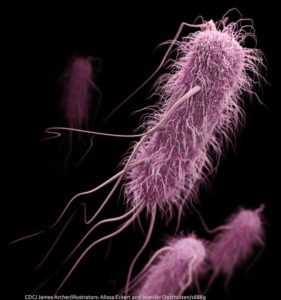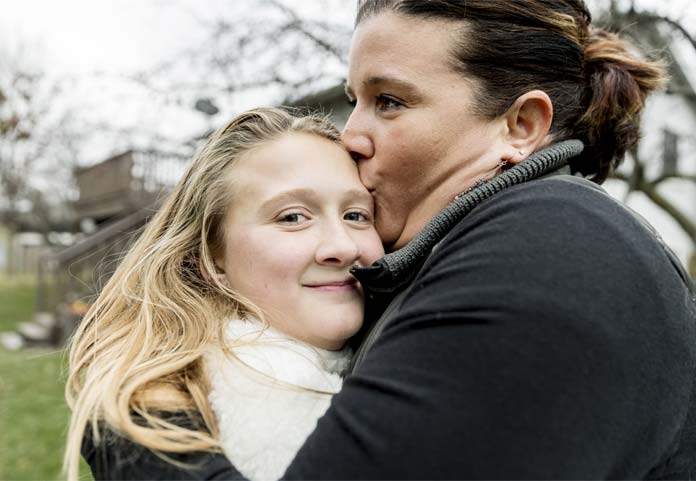A hemolytic uremic syndrome (HUS) lawsuit allows families to get compensation for a loved one who develops kidney failure because of unsanitary conditions at a food processing plant, restaurant, or petting zoo.
Hemolytic uremic syndrome lawsuits highlight the fact that HUS is preventable. A HUS lawsuit holds companies accountable for unsanitary conditions that allow E. coli bacteria to contaminate food, water, and environments marketed as safe places for children.
Small children, older adults, and anyone with a weakened immune system are at risk of severe kidney damage from HUS. Our lawyers can help your family sue the company responsible for your loved one’s illness.
Can I Sue for Hemolytic Uremic Syndrome?
If you or a family member contracted HUS, you can sue a company for compensation if there is evidence to prove the following.
- Your family member has been diagnosed with a Shiga-toxin producing E. coli (STEC) infection, usually serotype O157:H7
- Your STEC infection resulted in the development of HUS
- Your case of E. coli poisoning can be linked to food, eating at a specific restaurant, visiting a petting zoo, or visiting a fair
What is Hemolytic Uremic Syndrome?
Hemolytic uremic syndrome (HUS) is a disease that destroys red blood cells. Healthy red blood cells are smooth and round. In hemolytic uremic syndrome, toxins destroy red blood cells. These misshapen cells may clog the tiny blood vessels in the kidneys.
A healthy kidney is a filtration device that removes waste products from the blood. It contains hundreds of thousands of tiny filters called glomeruli, which are tiny tubes through which blood passes.
When kidneys are healthy, the artery brings blood and wastes from the bloodstream into the kidneys. The glomeruli clean the blood. Then waste and extra fluid goes out into the urine through the ureter. Clean blood leaves the kidneys and goes back into the bloodstream through the vein.
The red blood cells, damaged and misshaped by HUS, cannot pass through the glomeruli and cause blockage. This blockage results in the destruction of the glomeruli. If enough glomeruli are damaged, kidney function is compromised. In severe cases, the person suffers end-stage renal disease or even death.
Causes of Hemolytic Uremic Syndrome
Hemolytic uremic syndrome develops when Shiga toxin-producing Escherichia coli (STEC) bacteria lodged in the digestive tract make toxins (called Shiga toxins) that enter the bloodstream and start to destroy red blood cells.
In most cases, the patient ate food contaminated with the STEC bacterium. We have handled cases involving beef (ground, stew meat, and steaks), leafy greens, raw milk cheese, and other food products. We have also represented many people sickened by contaminated water. Most people who are infected with E. coli bacteria do not develop this disease.

Symptoms of HUS Kidney Failure in Children
Children with HUS kidney failure often appear pale, tired, and irritable. Other signs and symptoms of hemolytic uremic syndrome include small, unexplained bruises or bleeding from the nose or mouth that may occur because the toxins also destroy the platelets, cells that normally help the blood clot. Signs and symptoms may not become apparent until a week after the digestive problems have occurred.
More than half of children with HUS develop acute kidney failure. With kidney failure, the child’s urine output decreases. The urine may also appear red. Urine formation slows because the damaged red blood cells clog the tiny blood vessels in the kidneys, making them work harder to remove wastes and extra fluid from the blood. The body’s inability to rid itself of excess fluid and wastes may in turn cause high blood pressure or swelling of the face, hands, feet, or entire body.
Parents or guardians should call the child’s doctor immediately if the child has unexplained bruises, unusual bleeding, swollen limbs or generalized swelling, extreme fatigue, or decreased urine output. A child who goes 12 hours without urinating should be taken to a doctor or an emergency room.
How is HUS Kidney Failure Diagnosed?
A doctor may suspect that a child has HUS kidney failure after examining the child and learning the history of symptoms. The diagnosis is confirmed by microscopic examination of a blood sample to see if the red blood cells are misshapen.
How is HUS Kidney Failure Treated?
Treatment for HUS kidney failure, which consist of maintaining normal salt and water levels in the body, are aimed at easing the immediate symptoms and preventing further problems. A child may need a transfusion of red blood cells delivered through an intravenous, or IV, tube. In severe cases, several sessions of dialI ysis, a blood-cleansing treatment, may be required to temporarily take over the kidneys’ job of filtering wastes and extra fluid from the blood.
Some children may sustain significant kidney damage that slowly develops into permanent kidney failure, and will then require long-term dialysis or a kidney transplant. Some studies suggest that limiting protein in the child’s diet and treating high blood pressure with a medicine from a class of drugs called angiotensin-converting enzyme (ACE) inhibitors helps delay or prevent the onset of permanent kidney failure.
How Can I Protect My Child From HUS?
Washing and cooking foods adequately, especially meats, avoiding raw milk, and avoiding unclean swimming areas are the best ways to protect a child from this disease.
Hemolytic Uremic Syndrome Complications
Death and end-stage renal disease (ESRD) are the most serious complications of hemolytic uremic syndrome. Kidney failure treatment is expensive, and there will be future medical expenses related to HUS.
End-stage kidney disease is the complete, or almost complete, failure of the kidneys to function. The kidneys can no longer remove wastes, concentrate urine, or regulate many other important body functions.
End-stage kidney disease occurs when the kidneys are no longer able to function at a level needed for day-to-day life. This usually occurs when chronic kidney disease has worsened to the point at which kidney function is less than 10-percent of normal.
Patients who have reached this stage need dialysis or a kidney transplant. Most people who die or develop ESRD do so during the acute phase of this disease. According to a leading medical journal article, the incidence of death or permanent ESRD from HUS is 12-percent.
When someone dies, their family may have a wrongful death claim against the company responsible for the initial E. coli infection.
Are There Future Complications if my Child Survives HUS Kidney Failure?
Unfortunately, there may be future complications if your child survives HUS kidney failure. Your child will still be at risk for chronic kidney disease and hypertension (very high blood pressure).
Some cases of HUS are milder than others. For example, cases in which urine output is preserved and no dialysis is required are considered less severe than cases in which there is no urine output and/or longer-term dialysis. However, some studies have shown that children with mild cases develop renal problems at longer-term follow-up. Those problems include chronic renal failure. There does not appear to be any reliable data about the frequency of long-term kidney problems following mild cases.
For more information, please read “Long-Term Consequences of HUS Kidney Failure.”
Should I Sue If My Child has E.coli-HUS?
Our experience is that parents sue those responsible for their child’s illness for several reasons:
- They want to protect their child’s legal rights
- There are mounting medical bills with no end in sight
- Their child needs specialized care and may need it for the rest of their life
- They want to find out how the food got contaminated and why it was sold
- In both a contaminated food and a petting zoo context, they want to send a clear message that what happened was wrong
Before you make a decision, you should speak with an E. coli attorney to better understand your rights and the issues involved and then decide whether it’s right for you and your family to make a claim (or whether it’s even possible to do so).
For more information about an E. coli-HUS lawsuit, please read “If my child gets HUS from E. coli O157:H7, should our family sue?“
Should I Hire a Lawyer For My E.coli Kidney Failure Lawsuit?
Pritzker Hageman is one of the few law firms in the country with experience and success in handling E. coli kidney failure lawsuits.
These cases are extremely complicated and require extensive knowledge and experience in fields such as epidemiology, microbiology, medicine, food safety, sanitation, and, of course, trial law. Only a tiny percentage of lawyers have this training and experience, and fewer still have ever successfully handled a hemolytic uremic syndrome case.
The Pritzker Hageman E. coli lawyers have handled many E. coli O157 lawsuits and collected millions of dollars for their clients, including some of the largest recoveries in U.S. History. They have been interviewed by and quoted in the New York Times, Wall Street Journal, USA Today, and a host of national and local television news programs.
If I Decide to Hire Your Law Firm, How Much Will It Cost and How Will I Pay You?
Our firm is paid a percentage of the recovery, usually one-third. If there is no recovery, you owe us nothing. There are no up-front fees or retainers. We are not paid until we obtain a recovery for you.
Costs involved in prosecuting the case are advanced by our firm. If a recovery is obtained, we are reimbursed for our costs. This is in addition to our fee.
Pritzker Hageman was there for some very difficult times in my family. It is very nice to know people care and are willing to take your call personally. I was pleasantly surprised when I woul dcall the firm and be known without anyone referring to a file.
E. coli-HUS Client


How Can Our Lawyers Help You?
1-888-377-8900 (Toll-Free) | [email protected]
$7.5 Million Lawsuit for Child with HUS
Pritzker Hageman represented a family whose child developed E. coli-HUS after visiting a petting zoo. Because the company that owned the property did not want to give the little child settlement money, our legal team took the case to trial and won a $7.5 million verdict.

The Facts of the Case
A child, age 10, went with her family to a pumpkin patch business that included a petting zoo where children could pet and feed cows, a number of play areas, and a concessions area.
Several days later, the child began suffering fever, cramps, and diarrhea. When her symptoms worsened, her parents took her to a hospital emergency room, where staff diagnosed an E. coli infection. The infection led to hemolytic uremic syndrome. Although the child recovered, she sustained permanent kidney damage.
Her past medical expenses totaled about $300,000, and her future medical expenses are estimated at about $2 million.
Six other people who visited the pumpkin patch around the same time also fell ill.
The Fight for Justice for a Sick Child
The child’s parents, on her behalf, sued the owners, alleging that they failed to keep patrons safe from diseases that cows could transmit. The plaintiffs contended that the owners should have taken steps such as placing hand-washing stations near the animal enclosure and posting warnings alerting patrons to the risk of bacterial contamination.
The plaintiffs presented evidence that on the day the child and her family visited the premises, there was manure in the ¬enclosure where the cows were kept, as well as on the hay, the cows’ hides, and hooves, and the gate that separated the children from the cows. Despite this, the plaintiffs claimed, the owners took no precautions and provided hand sanitizer only at a concession stand. The plaintiffs’ expert public health veterinarians testified that proper facility design would have prevented the E. coli infection.
The owners testified that they were unaware diseases could be transmitted to patrons visiting the petting zoo and that most small pumpkin patch operators were similarly unaware. The defendants also asserted that because they provided alcohol-based hand sanitizer throughout the property, they satisfied any duty to prevent zoonotic disease. This hand sanitizer, they argued, was just as effective as hand-washing. The defendants also argued that the child’s chaperones knew that the hand sanitizer was available and important but failed to make sure she used it before eating. These chaperones, according to the defendants, were primarily responsible for the child’s hand hygiene and were, therefore, primarily responsible for her infection.
The jury awarded $7.55 million, including $3 million for lost future earning capacity; $2 million for future medical expenses; $2 million for future pain and suffering; and $250,000 for past pain and suffering and emotional distress.
Before post-trial motions, the parties settled the case.